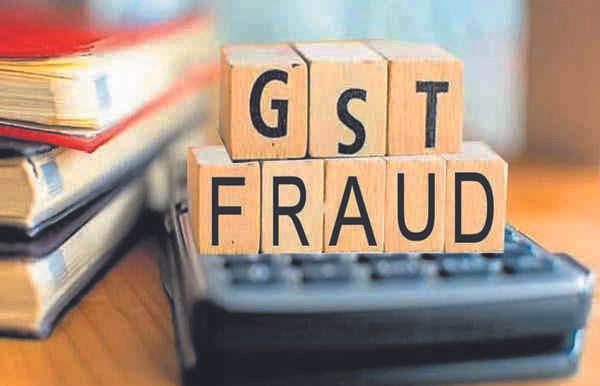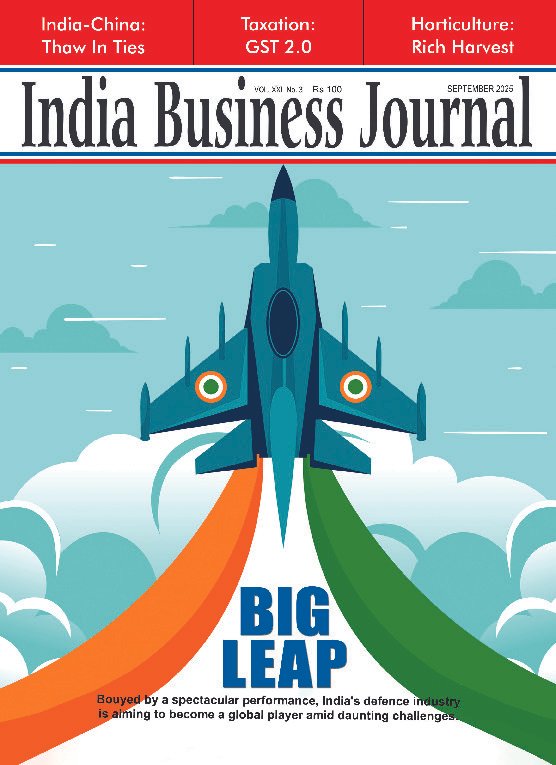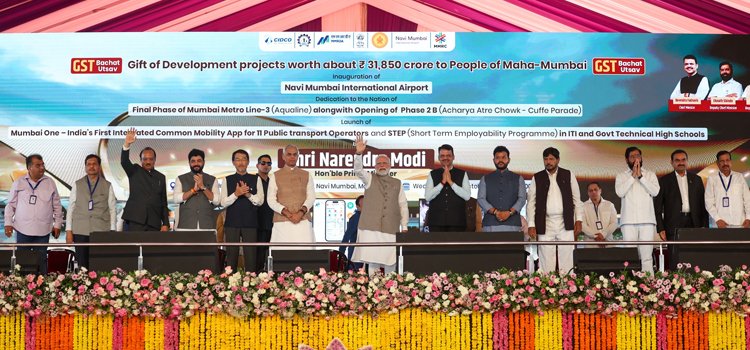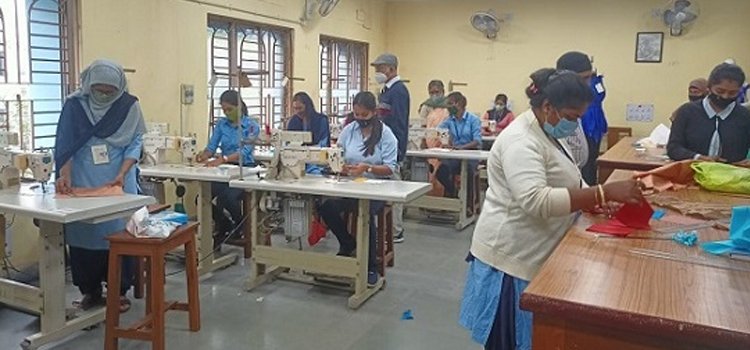ECONOMY
Rising GST frauds get the government to consider tightening norms and procedures and launching technological solutions
- Shrivatsa Joshi
- Dec 31, 2020

A relentless crackdown is under way to check frauds and evasion related to Goods and Services Tax (GST). In early December, the Union government cancelled GST registrations of over 1,63,000 entities in line with its tough measures against tax irregularities. The cancellation took effect after these entities had failed to file monthly GSTR-3B returns for over six months.
The entities that had not filed their GSTR-3B returns for over six months were first issued cancellation notices. It was after no response was received from these firms that their registrations were cancelled in accordance with the standard operating procedure, reveals an official of the Union Finance Ministry. The official, who did not want to be identified, further adds that the government has listed out 28,635 taxpayers who have failed to file GSTR-3B returns for over six months as of December 1. The cancellation of their registrations is also in the process, he adds.
According to an official report, there are about 6,00,000 dormant GST-registered firms among the over 12,00,000 entities that have GST registrations. The government’s stringent action is aimed at tackling fake firms indulging in circular trading by generating fake invoices and misusing the provision of input tax credit (ITC).
Since mid-November, the government has intensified its nationwide drive against fake invoice frauds. The Directorate General of GST Intelligence (DGGI) and Central GST (CGST) Commissionerates have so far arrested more than 132 persons, including four chartered accountants, for misusing ITC fraudulently. The authorities have also booked over 1,430 cases against more than 4,586 fake, GST-registered entities across the country.
According to official figures, the CGST authorities have detected tax evasion of Rs 70,206 crore from July 1, 2017 – when the GST was introduced – to January 2020. Interestingly, the 15th Finance Commission and the International Monetary Fund (IMF) have separately put the loss through evasion and frauds at over Rs 10,00,000 crore during the past three years since the progressive, indirect tax was rolled out. With acute revenue constraints, the GST authorities are leaving no stone unturned to frustrate fraudulent elements in the system, recover whopping amount of the tax lost through frauds and check further evasion.
Tough norms
Amid the huge revenue losses due to frauds, the GST Council – the highest decision-making authority on the tax, comprising Union and State finance ministers – has proposed an overhaul of the GST registration process and other procedures to plug the loopholes. The law committee of the GST Council – which comprises Central and State government officials who advise their ministerial members – has recently drawn up a set of recommendations, which can help in tightening the GST norms. These recommendations have been placed before the GST Council for its approval and further action.
The GST Council is looking to further tighten the GST registration process. There is also the proposal to amend the GST Act to curb the menace of fake invoicing. The registration process is likely to be tightened to prevent misuse of provisions in the current system by fake dealers. Besides, provisions related to suspension of registration are also being streamlined to make the procedure of suspension and cancellation of registration more efficient and faster. All these proposals are being considered so that fraud operators can be prevented well in time from continuing to pass on fake credit down the supply chain.
The GST Council is mulling use of Aadhaar or Aadhaar-like biometric identification for new registrations. Some of the other recommendations include steps to identify businesses that pose a risk of revenue loss to the exchequer, use of Income Tax returns to verify credentials of entrepreneurs seeking GST registration and restriction on using tax credits from purchase of raw materials to meet the final tax liability. The Finance Ministry is in the process of plugging the gaps in the GST registration process to ensure that only genuine businesses get a GST registration. Efforts are on to ensure that those who have intent to defraud the system are purged out at the registration stage itself.
Businesses, whose owners or promoters do not have commensurate financial track record – like filing of Income Tax returns and payment of Income Tax to the government – may require detailed physical and financial verification by tax officers before their companies can be considered for GST registration. Entrepreneurs who fall under the category of trustworthy are likely to get GST registration within a week. The others will be given the registration within two months of physical verification of business premises. Moreover, those applicants who do not seem trustworthy may be asked to pay a part of their tax liability in cash instead of adjusting it fully against the tax credit available to them.
Besides, the GST Council is considering using data analytics techniques to identify taxpayers who are suspected to be indulging in fraudulent activities. A coordinated action is likely to be taken against such elements by suspending their registration. This will be followed by detailed physical and financial verification by field officers to check genuineness of their operations before they are allowed to reuse their registration.
Tech aids
Meanwhile, the government is looking up to technological solutions to battle the menace of GST frauds and evasion. Electronic invoices (e-invoices) are being seen as an effective tool not just to check tax evasion but also reduce compliance burden and make it easier for businesses to operate. Currently, GST-registered entities end up filing 24 GST returns every year – GSTR-1 and GSTR-3B have to be filed every month. The GSTR-1 is a return indicating sales or outward supplies made during a month. The GSTR-3B is a summary return indicating supplies made, ITC utilised and tax payment made for a month.
In an e-invoice system, e-invoices generated by sellers are reported on the government’s Invoice Registration Portal (IRP). The IRP will return signed e-invoices with a unique Invoice Reference Number (IRN). The e-invoices with a valid IRN can then be sent to buyers. The e-invoice system thus enables businesses to maintain a record of all their invoices in the electronic form. This eliminates the need to file monthly returns, as the e-invoices will be auto-populated in the taxpayers’ respective accounts.
The e-invoicing system is being implemented in a phased manner, with e-invoices mandatory for companies with turnover of Rs 500 crore or more since October 2020. From January 1, 2021, e-invoices will become compulsory for companies with turnover of more than Rs 100 crore, and from April 1, 2021, they will be mandatory for all companies. The government believes that e-invoices will eliminate fake invoices that are used to claim ITC fraudulently.
“Once you have an e-invoice, it should ultimately do away with your e-way bills and also eventually with GST returns. From the e-invoice itself, returns can be generated. Then, at the end of the month, the taxpayer has to simply validate his return and make the payment of taxes,” notes Union Finance Secretary Ajay Bhushan Pandey. He further adds: “The e-invoice system will lead to a massive reduction in compliance, and at the same time, it will be good for the industry, good for the taxpayers and very difficult for the fraudsters.”
The government has recently launched another taxpayer-friendly scheme – the Quarterly Return Filing And Monthly Payment of Taxes (QRMP) Scheme – for small taxpayers under the GST system. Accordingly, taxpayers with aggregate annual turnover of up to Rs 5 crore in the preceding financial year are eligible for this scheme. Under the QRMP scheme, the small taxpayers are allowed to furnish GST returns (GSTR-1 and GSTR-3B) on a quarterly basis along with monthly payment of tax with effect from January 1, 2021.
The GST is a progressive tax system that has unfortunately been embroiled in glitches and complications since its rollout in July 2017. Technology has sadly failed to support the indirect tax system, leading to severe hardship among taxpayers. Besides, fraudsters have used loopholes in the system to cheat the exchequer. With tax evasion growing at an alarming proportion, the government has stepped up technology to combat tax frauds. The recently-launched e-invoice system and the proposed, stringent registration norms may perhaps finally end up turning GST into a truly progressive tax.





















Report By
View Reporter News